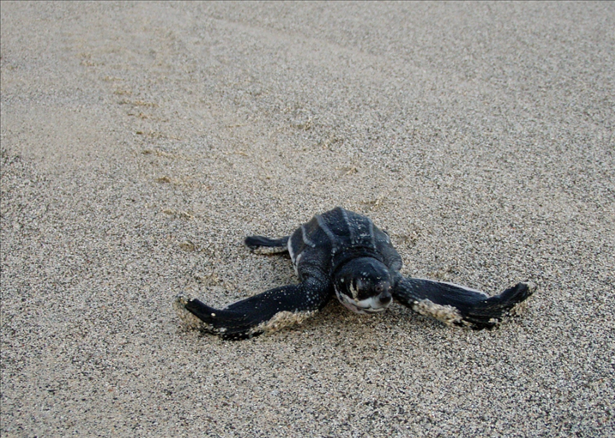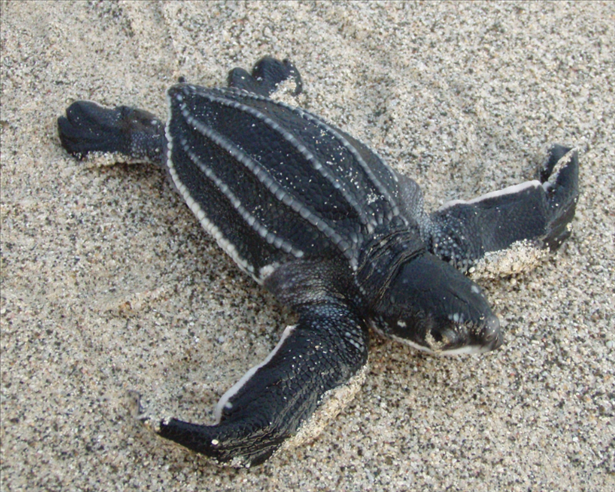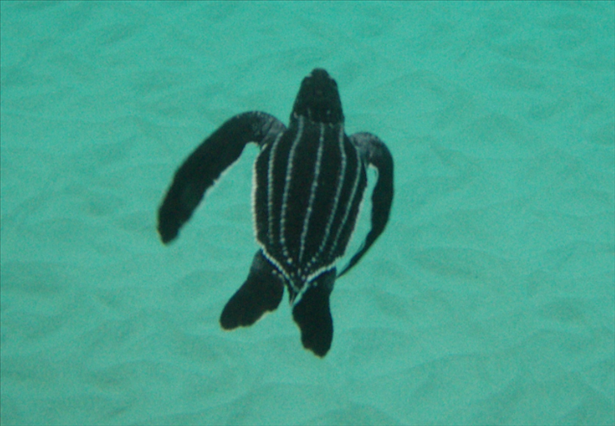

- PHOTOS:
- Dec 16, 2008 - May 21, 2009
- Mar 17, 2008 - Dec 15, 2008
- Nov 01, 2007 - Mar 16, 2008
- Our SC35 Sailboat: PRUDENCE
- SELECTED BLOGS
- Jan'05: The Idea
- May'05: First Cruise - Belize
- Aug'05: Buying Ashiya
- Oct'05: School in St. Vincent
- Nov'05: Ocracoke on Ashiya
- Jul'06: Long Trip on Ashiya
- Oct'06: Prudence Comes Home
- Nov'07: First Night Offshore
- Nov'07: Offshore Take Two
- Nov'07: Gulf Stream Crossing
- Dec'07: Green Turtle Cay
- Dec'07: Lynyard Cay
- Dec'07: Warderick Wells Cay
- Jan'08: George Town
- Jan'08: Life without a Fridge
- Jan'08: Mayaguana Island
- Jan'08: Turks & Caicos
- Jan'08: Dominican Republic
- Jan'08: Down the Waterfalls
- Feb'08: Puerto Rico
- Feb'08: Starter Troubles
- Feb'08: Vieques
- Mar'08: Finally Sailing Again
- Mar'08: Trip So Far
- Mar'08: Hiking Culebra
- Mar'08: Kayak & Snorkel I
- Mar'08: Teak and Waterspouts
- Mar'08: Kayak & Snorkel II
- Mar'08: Bottom Cleaning
- Apr'08: Culebra Social Life
- Apr'08: Culebra Routine
- Apr'08: Culebra Beaches
- Apr'08: Culebrita
- Jun'08: Kayak & Snorkel III
- Jun'08: Kayak & Snorkel IV
- Jun'08: Manta Ray
- Jun'08: Sea Turtles
- Jul'08: Cost of Cruising
- Jul'08: Busy Week in Culebra
- Jul'08: Getting to Land
- Jul'08: Leatherback Boil
- Jul'08: Fish and Volcano Dust
- Aug'08: Teaching Algebra
- Sep'08: Culebra Card Club
- Oct'08: Kayak & Snorkel V
- Oct'08: Prep for Hurricane
- Oct'08: Hurricane Omar
- Oct'08: Fish and Sea Glass
- Oct'08: Waterspouts
- Dec'08: Hurricane Season Ends
- Dec'08: Culebra to St. Martin
- Jan'09: Antigua Part 1
- Feb'09: The Saints
- Feb'09: Visiting Dominica
- Mar'09: Antigua Part 2
- Apr'09: Antigua to Bermuda
- May'09: Bermuda to Norfolk
- FULL LIST of Blog Entries
15 July 2009
14 July 2009
15 June 2009
14 June 2009 | Annapolis, MD
13 June 2009
12 June 2009
11 June 2009
10 June 2009 | Little Creek Marina, Norfolk, VA, USA
04 June 2009 | Little Creek Marina, Norfolk, VA, USA
31 May 2009 | Little Creek Marina, Norfolk, VA, USA
29 May 2009 | Little Creek Marina, Norfolk, VA, USA
26 May 2009 | Little Creek Marina, Norfolk, VA, USA
25 May 2009 | Little Creek Marina, Norfolk, VA, USA
13 May 2009 | through 21-May-2009
13 May 2009 | through 21-May-2009
12 May 2009 | St George's Town, Bermuda
11 May 2009 | St George's Town, Bermuda
07 May 2009 | St George's Town, Bermuda
04 May 2009 | St George's Town, Bermuda
21 April 2009 | through 02-May-2009
Sheryl's Sea Turtle Story
24 June 2008 | Zoni Beach, Culebra, Puerto Rico

For this blog entry, I would like to welcome a guest author. Sheryl rose early for several days running to gather this unique experience with this endangered species (while I remained comfortably at slumber); therefore, it is only fitting that she get the opportunity to share it with you in her own words...
For the past four days I have been participating with DRNA trained volunteers on Zoni Beach looking for leatherback sea turtle hatchlings. We arrive at the beach at sunrise looking for the telltale turtle tracks that start at the clutches and go to the edge of the water. So far this year there are 48 clutches roped off, each one taking between 60-70 days to hatch. Yesterday, nest number 13 showed signs of baby turtles making their way to the ocean.
Abbie, who is authorized by the Departamento de Recursos Naturales y Ambientales (DRNA), gently moved the sand looking for the nest and any turtles that haven't been able to escape to the surface. Nadeen and Nancy, other DRNA volunteers, counted 14 different turtle tracks showing the turtles that made it to the water before sunrise. Abbie and Nadeen found five hatchlings still struggling to make it to the surface. Amdry, an eleven-year-old volunteer and one of Abbie's students, and I rushed to the water's edge to fill bottles with salt water. The baby turtles are dehydrated and appreciate salt water showers. Amdry and I worked together to make a path in the sand directly to the water's edge, which included rounding the one foot drop made by the falling tide. The three inch long turtles stimulate one another by scrambling over each other. Amdry showed me how to gently stroke their leathery backs and sides to imitate this activity. If they showed signs of slow progress to the water we would point them in the right direction and give them encouragement. It was incredible! The leatherback turtle's fore flippers are huge and they use them to pull themselves forward inch by inch. Once they made it down the incline and could feel the wet sand under their plastrons they really made tracks to the water.

The other part of my job is to look out for frigate birds. They think leatherback turtle babies are their breakfast and since the sea turtles are on the critically endangered list, we try to help them survive this perilous stage of their lives. We watched the sea turtles bob in the surf and helped them get beyond the small breaking waves. Once free from the surf, the five leatherback sea turtles swam along at the surface, taking breaths often. They are on their way to the open ocean, to eat jelly fish and squid and grow up to be 4-8 feet long and weigh 650-1,300 pounds. In a few years they will return to mate and the females will come ashore on Zoni Beach to lay their eggs.

Amdry and I walked back up to where Abbie, Nadeen and Nancy were working with the nest. As volunteers they record information about the clutch such as when the eggs were laid, if the nest had ever been washed out (the big north swell back in March had waves crashing much higher than the normal high tide mark), how many turtles made it out before sunrise, and how many were left struggling in the nest. They also count the eggs that did not hatch and determine what level of development they reached. A female leatherback turtle lays between 60 and 100 eggs per nest several times during the nesting season.

Just as they were finishing up I noticed some sand moving on the side of the large hole. There was one more baby turtle struggling to survive! Now the sun was shining, so I provided a shaded escort down the beach, trickling water and stroking his back like I had been taught. I entered the water with him and swam for about 30 minutes, watching out for frigate birds. He didn't seem too eager to swim away from me. Eventually I had to let him go out to deeper water where I hoped he would take big breaths, dive deep and avoid the fish that also want to make a meal out of him.
Please click here to see movies and more pictures of these incredible leatherback sea turtles.

For the past four days I have been participating with DRNA trained volunteers on Zoni Beach looking for leatherback sea turtle hatchlings. We arrive at the beach at sunrise looking for the telltale turtle tracks that start at the clutches and go to the edge of the water. So far this year there are 48 clutches roped off, each one taking between 60-70 days to hatch. Yesterday, nest number 13 showed signs of baby turtles making their way to the ocean.
Abbie, who is authorized by the Departamento de Recursos Naturales y Ambientales (DRNA), gently moved the sand looking for the nest and any turtles that haven't been able to escape to the surface. Nadeen and Nancy, other DRNA volunteers, counted 14 different turtle tracks showing the turtles that made it to the water before sunrise. Abbie and Nadeen found five hatchlings still struggling to make it to the surface. Amdry, an eleven-year-old volunteer and one of Abbie's students, and I rushed to the water's edge to fill bottles with salt water. The baby turtles are dehydrated and appreciate salt water showers. Amdry and I worked together to make a path in the sand directly to the water's edge, which included rounding the one foot drop made by the falling tide. The three inch long turtles stimulate one another by scrambling over each other. Amdry showed me how to gently stroke their leathery backs and sides to imitate this activity. If they showed signs of slow progress to the water we would point them in the right direction and give them encouragement. It was incredible! The leatherback turtle's fore flippers are huge and they use them to pull themselves forward inch by inch. Once they made it down the incline and could feel the wet sand under their plastrons they really made tracks to the water.

The other part of my job is to look out for frigate birds. They think leatherback turtle babies are their breakfast and since the sea turtles are on the critically endangered list, we try to help them survive this perilous stage of their lives. We watched the sea turtles bob in the surf and helped them get beyond the small breaking waves. Once free from the surf, the five leatherback sea turtles swam along at the surface, taking breaths often. They are on their way to the open ocean, to eat jelly fish and squid and grow up to be 4-8 feet long and weigh 650-1,300 pounds. In a few years they will return to mate and the females will come ashore on Zoni Beach to lay their eggs.

Amdry and I walked back up to where Abbie, Nadeen and Nancy were working with the nest. As volunteers they record information about the clutch such as when the eggs were laid, if the nest had ever been washed out (the big north swell back in March had waves crashing much higher than the normal high tide mark), how many turtles made it out before sunrise, and how many were left struggling in the nest. They also count the eggs that did not hatch and determine what level of development they reached. A female leatherback turtle lays between 60 and 100 eggs per nest several times during the nesting season.

Just as they were finishing up I noticed some sand moving on the side of the large hole. There was one more baby turtle struggling to survive! Now the sun was shining, so I provided a shaded escort down the beach, trickling water and stroking his back like I had been taught. I entered the water with him and swam for about 30 minutes, watching out for frigate birds. He didn't seem too eager to swim away from me. Eventually I had to let him go out to deeper water where I hoped he would take big breaths, dive deep and avoid the fish that also want to make a meal out of him.
Please click here to see movies and more pictures of these incredible leatherback sea turtles.
| Vessel Name: | Prudence |
| About: |
Gallery not available

- PHOTOS:
- Dec 16, 2008 - May 21, 2009
- Mar 17, 2008 - Dec 15, 2008
- Nov 01, 2007 - Mar 16, 2008
- Our SC35 Sailboat: PRUDENCE
- SELECTED BLOGS
- Jan'05: The Idea
- May'05: First Cruise - Belize
- Aug'05: Buying Ashiya
- Oct'05: School in St. Vincent
- Nov'05: Ocracoke on Ashiya
- Jul'06: Long Trip on Ashiya
- Oct'06: Prudence Comes Home
- Nov'07: First Night Offshore
- Nov'07: Offshore Take Two
- Nov'07: Gulf Stream Crossing
- Dec'07: Green Turtle Cay
- Dec'07: Lynyard Cay
- Dec'07: Warderick Wells Cay
- Jan'08: George Town
- Jan'08: Life without a Fridge
- Jan'08: Mayaguana Island
- Jan'08: Turks & Caicos
- Jan'08: Dominican Republic
- Jan'08: Down the Waterfalls
- Feb'08: Puerto Rico
- Feb'08: Starter Troubles
- Feb'08: Vieques
- Mar'08: Finally Sailing Again
- Mar'08: Trip So Far
- Mar'08: Hiking Culebra
- Mar'08: Kayak & Snorkel I
- Mar'08: Teak and Waterspouts
- Mar'08: Kayak & Snorkel II
- Mar'08: Bottom Cleaning
- Apr'08: Culebra Social Life
- Apr'08: Culebra Routine
- Apr'08: Culebra Beaches
- Apr'08: Culebrita
- Jun'08: Kayak & Snorkel III
- Jun'08: Kayak & Snorkel IV
- Jun'08: Manta Ray
- Jun'08: Sea Turtles
- Jul'08: Cost of Cruising
- Jul'08: Busy Week in Culebra
- Jul'08: Getting to Land
- Jul'08: Leatherback Boil
- Jul'08: Fish and Volcano Dust
- Aug'08: Teaching Algebra
- Sep'08: Culebra Card Club
- Oct'08: Kayak & Snorkel V
- Oct'08: Prep for Hurricane
- Oct'08: Hurricane Omar
- Oct'08: Fish and Sea Glass
- Oct'08: Waterspouts
- Dec'08: Hurricane Season Ends
- Dec'08: Culebra to St. Martin
- Jan'09: Antigua Part 1
- Feb'09: The Saints
- Feb'09: Visiting Dominica
- Mar'09: Antigua Part 2
- Apr'09: Antigua to Bermuda
- May'09: Bermuda to Norfolk
- FULL LIST of Blog Entries





